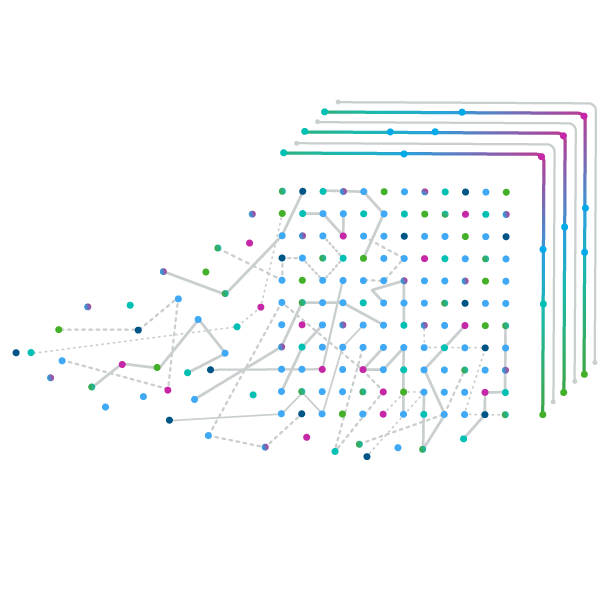Outdated compliance practices aren't viable amid evolving market and regulatory changes. IQVIA’s award-winning, end-to-end quality management system streamlines the product value chain, accelerates market entry, safeguards companies and patient safety, and meets complex regulatory demands.
-
Americas
-
Asia & Oceania
-
A-I
J-Z

EMEA Thought Leadership
Developing IQVIA’s positions on key trends in the pharma and life sciences industries, with a focus on EMEA.
Learn more -
Middle East & Africa

EMEA Thought Leadership
Developing IQVIA’s positions on key trends in the pharma and life sciences industries, with a focus on EMEA.
Learn more
Regions
-
Americas
-
Asia & Oceania
-
Europe
-
Middle East & Africa
-
Americas
-
Asia & Oceania
-
Europe
Europe
- Adriatic
- Belgium
- Bulgaria
- Czech Republic
- Deutschland
- España
- France
- Greece
- Hungary
- Ireland
- Israel
- Italia

EMEA Thought Leadership
Developing IQVIA’s positions on key trends in the pharma and life sciences industries, with a focus on EMEA.
Learn more -
Middle East & Africa

EMEA Thought Leadership
Developing IQVIA’s positions on key trends in the pharma and life sciences industries, with a focus on EMEA.
Learn more
SOLUTIONS
-
Research & Development
-
Real World Evidence
-
Commercialization
-
Safety & Regulatory Compliance
-
Technologies
LIFE SCIENCE SEGMENTS
HEALTHCARE SEGMENTS
- Information Partner Services
- Financial Institutions
- Global Health
- Government
- Patient Associations
- Payers
- Providers
THERAPEUTIC AREAS
- Cardiovascular
- Cell and Gene Therapy
- Central Nervous System
- GI & Hepatology
- Infectious Diseases and Vaccines
- Oncology & Hematology
- Pediatrics
- Rare Diseases
- View All

Impacting People's Lives
"We strive to help improve outcomes and create a healthier, more sustainable world for people everywhere.
LEARN MORE
Harness the power to transform clinical development
Reimagine clinical development by intelligently connecting data, technology, and analytics to optimize your trials. The result? Faster decision making and reduced risk so you can deliver life-changing therapies faster.
Research & Development OverviewResearch & Development Quick Links

Real World Evidence. Real Confidence. Real Results.
Generate and disseminate evidence that answers crucial clinical, regulatory and commercial questions, enabling you to drive smarter decisions and meet your stakeholder needs with confidence.
REAL WORLD EVIDENCE OVERVIEWReal World Evidence Quick Links

See markets more clearly. Opportunities more often.
Elevate commercial models with precision and speed using AI-driven analytics and technology that illuminate hidden insights in data.
COMMERCIALIZATION OVERVIEWCommercialization Quick Links

Service driven. Tech-enabled. Integrated compliance.
Orchestrate your success across the complete compliance lifecycle with best-in-class services and solutions for safety, regulatory, quality and medical information.
COMPLIANCE OVERVIEWSafety & Regulatory Compliance Quick Links

Intelligence that transforms life sciences end-to-end.
When your destination is a healthier world, making intelligent connections between data, technology, and services is your roadmap.
TECHNOLOGIES OVERVIEWTechnology Quick Links
CLINICAL PRODUCTS
COMMERCIAL PRODUCTS
COMPLIANCE, SAFETY, REG PRODUCTS
BLOGS, WHITE PAPERS & CASE STUDIES
Explore our library of insights, thought leadership, and the latest topics & trends in healthcare.
DISCOVER INSIGHTSTHE IQVIA INSTITUTE
An in-depth exploration of the global healthcare ecosystem with timely research, insightful analysis, and scientific expertise.
SEE LATEST REPORTSFEATURED INNOVATIONS
-
IQVIA Connected Intelligence™
-
IQVIA Healthcare-grade AI®
-
IQVIA AI Assistant
-
Human Data Science Cloud
-
IQVIA Innovation Hub
-
Decentralized Trials
-
Patient Experience Solutions with Apple devices
WHO WE ARE
- Our Story
- Our Impact
- Commitment to Global Health
- Code of Conduct
- Sustainability
- Privacy
- Executive Team
NEWS & RESOURCES

Unlock your potential to drive healthcare forward
By making intelligent connections between your needs, our capabilities, and the healthcare ecosystem, we can help you be more agile, accelerate results, and improve patient outcomes.
LEARN MORE
IQVIA AI is Healthcare-grade AI
Building on a rich history of developing AI for healthcare, IQVIA AI connects the right data, technology, and expertise to address the unique needs of healthcare. It's what we call Healthcare-grade AI.
LEARN MORE
Meet the IQVIA AI Assistant
Your new expert analyst is here. Be at the forefront of data-driven decision-making with a new generative AI tool that enables you to interact with our products and solutions like never before. Get results you can trust, faster.
LEARN MORE
Your healthcare data deserves more than just a cloud.
The IQVIA Human Data Science Cloud is our unique capability designed to enable healthcare-grade analytics, tools, and data management solutions to deliver fit-for-purpose global data at scale.
LEARN MORE
Innovations make an impact when bold ideas meet powerful partnerships
The IQVIA Innovation Hub connects start-ups with the extensive IQVIA network of assets, resources, clients, and partners. Together, we can help lead the future of healthcare with the extensive IQVIA network of assets, resources, clients, and partners.
LEARN MORE
Proven, faster DCT solutions
IQVIA Decentralized Trials deliver purpose-built clinical services and technologies that engage the right patients wherever they are. Our hybrid and fully virtual solutions have been used more than any others.
LEARN MORE
IQVIA Patient Experience Solutions with Apple devices
Empowering patients to personalize their healthcare and connecting them to caregivers has the potential to change the care delivery paradigm.
LEARN MOREIQVIA Careers
Featured Careers
Stay Connected

WE'RE HIRING
"At IQVIA your potential has no limits. We thrive on bold ideas and fearless innovation. Join us in reimagining what’s possible.
VIEW ROLES- Blogs
- The Impact of Generative AI in Quality Management
Quality and regulatory teams can use generative AI to improve efficiency and performance
Artificial Intelligence (AI) technologies are increasingly integrated into various aspects of daily life, from smartphone apps to autonomous vehicles, revolutionizing industries and reshaping how humans interact with technology.
While traditional AI focuses on performing specific tasks with existing data, generative AI enables the creation of new content. Generative AI has the potential to transform how quality management (QM) and regulatory affairs (RA) tasks are done.
Global harmonization is the ideal, but most countries still have specific QM and RA requirements, and the time organizations spend on quality and regulatory work continues to increase while regulators are shortening the time in which organizations must report. Given these conditions, many life sciences companies are less confident that they can maintain compliance and keep pace with the volume of data and work. With the human resource pool shrinking, technological solutions will be needed to manage these challenges.
“There are over 101,000 global regulations and reference documents. Each year, over 8,000 new regulations and reference documents are published. That means there’s a new or changed regulation or reference document published somewhere in the world every 13 minutes.” Kari Miller, IQVIA
Generative AI is powering massive productivity gains across industries
Experts agree that generative AI tools will touch every industry, thanks to their ability to create images and video, software code, new proteins for drug discovery, and more. According to McKinsey, generative AI will add $4.4 trillion per year to the global economy.1 Organizations like Harvard, MIT, and Boston Consulting estimate that productivity gains from generative AI may be up to 60%. 2,3,4,5
Generative AI tools can deliver significant value to many quality and regulatory processes
Generative AI-powered features can be applied to a wide range of quality and regulatory work, including user training and support, research, content and code creation, personalization, translations, and more. By integrating generative AI-powered solutions into workflows, organizations can generate quality management system (QMS) and regulatory content, support users with bot assistants, and automatically classify and tag regulatory and quality information.
- QMS content generation – Generative AI can assist with content associated with audits, design control meetings and review sessions, training content, documents, and translations.
- Regulatory content generation – Promising applications of generative AI include submission document content, label authoring, and generation of consistent responses to regulatory bodies.
- Bot assistants – These tools can support eSOPs and work instructions, how-to guides, summarized instructions for power users, and user support.
- Auto-classification and tagging of regulatory and QMS information – Generative AI can read and summarize lengthy regulatory documents, auto-suggest metadata, and tags, and leverage existing ontologies and taxonomies.
AI interactions that are augmented by human knowledge can be powerful in the quality and regulatory space
AI tools can handle tedious, repetitive tasks and humans make the final decisions based on experiential knowledge.
- Improved operational efficiencies – Generative AI can decrease time and costs while executing robust processes. The technology provided a more efficient way to implement and revise quality processes.
- Faster time to market – By reducing or eliminating disjointed manual processes, generative AI minimizes unnecessary delays. As productivity increases, cycle times decrease.
- Better Quality Control – Generative AI continually improves quality by providing better training for the workforce as well as rapidly assessing and implementing changes to quality processes.
Getting started with generative AI is about balance
There will be cases where generative AI is the best tool, but there will be cases where it’s not. Ensure the technology is fit for purpose, that data governance and security is appropriate for the task and do a financial viability check to ensure the value realized from solving the problem will outrun the costs.
The generative AI powered solutions delivering the most value to QM and RA work will keep humans in the loop; support users and give them a way to manage AI, track history, customize and protect data; avoid cybersecurity risk; leverage multimodality in inputs and outputs; offer excellent user experience, deliver high-quality results, and provide real value.
Learn more about how IQVIA technologies can support your organization.
References:
- https://www.mckinsey.com/capabilities/mckinsey-digital/our-insights/the-economic-potential-of-generative-ai-the-next-productivity-frontier#key-insights
- Dell’Acqua et al. (2023) Navigating the Jagged Technological Frontier: Field Experimental Evidence of the Effects of AI on Knowledge Worker Productivity and Quality – Harvard, Boston Consulting Group, MIT
- https://www.nngroup.com/articles/ai-tools-productivity-gains/
- Sida Peng, Eirini Kalliamvakou, Peter Cihon, and Mert Demirer (2023): The Impact of AI on Developer Productivity: Evidence from GitHub Copilot
- Shakked Noy and Whitney Zhang (2023): Experimental Evidence on the Productivity Effects of Generative Artificial Intelligence. – MIT











